читайте также
 Turkey’s Real Estate Market in 2024–2025: Risks and Restrictions for Foreign Investors
Turkey’s Real Estate Market in 2024–2025: Risks and Restrictions for Foreign Investors
 Migration News of the Week: Nomads, Investors, and Refugees
Migration News of the Week: Nomads, Investors, and Refugees
 Housing Prices in the Czech Republic Rising at Record Pace
Housing Prices in the Czech Republic Rising at Record Pace
 U.S. Visas: New Rules for Russia, Belarus, and Ukraine
U.S. Visas: New Rules for Russia, Belarus, and Ukraine
 Rising Consumption and Declining Rental Rates in China’s Shopping Malls
Rising Consumption and Declining Rental Rates in China’s Shopping Malls
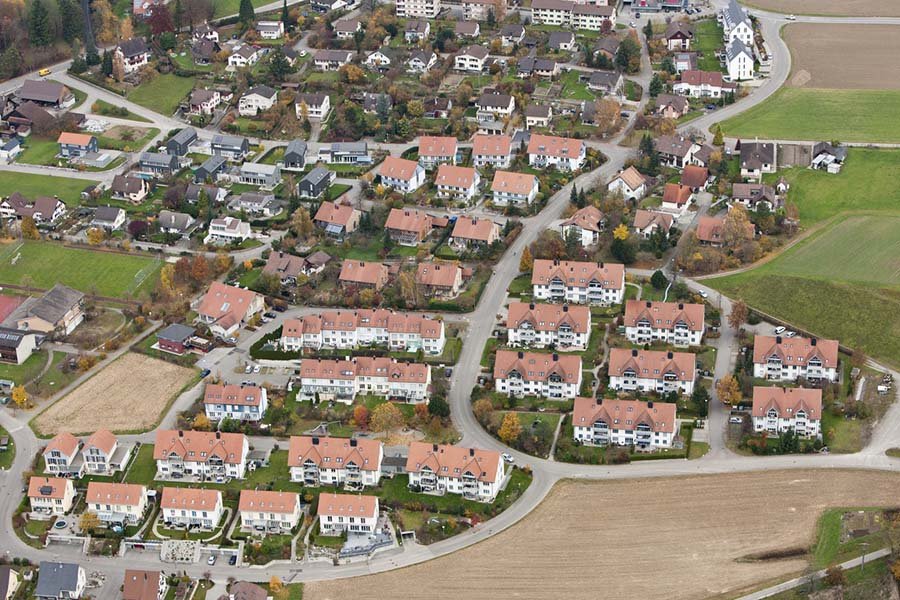 Baby Boomers Could Crash Switzerland’s Housing Market
Baby Boomers Could Crash Switzerland’s Housing Market
Top 10 Most Polluted Countries in the World in 2024: AQI Ranking
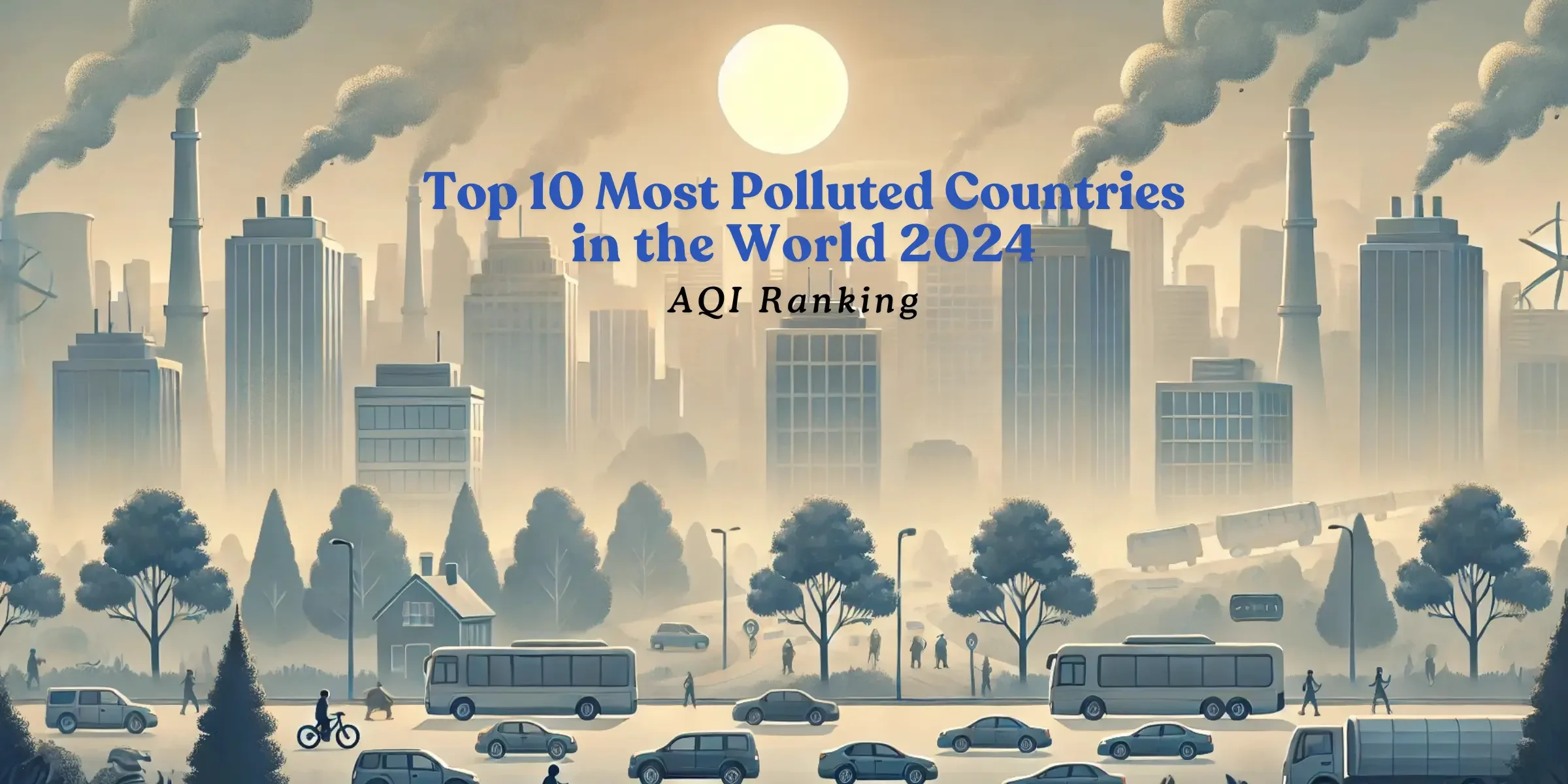
The global air pollution crisis has reached alarming levels, with many countries experiencing significant deterioration in air quality. The AQI air quality ranking has identified the 10 countries with the highest concentration of harmful substances, posing severe health risks to their residents.
1. Bangladesh
Average AQI in 2024: 140
Bangladesh is the most polluted country in the world in 2024. AQI data shows a dangerously high average level of 140, indicating severe pollution. In January, AQI reached 244, making it one of the worst months for air quality.
The primary sources of pollution in Bangladesh include vehicle emissions, industrial activities, and biomass burning. The country’s average PM2.5 level is 75 μg/m³, far exceeding the WHO’s recommended limit of 10 μg/m³. Pollution levels peak during winter months when smog is most intense.
High concentrations of fine particulate matter contribute to respiratory diseases, cardiovascular issues, and premature deaths. Long-term exposure to PM2.5 can reduce life expectancy by several years.
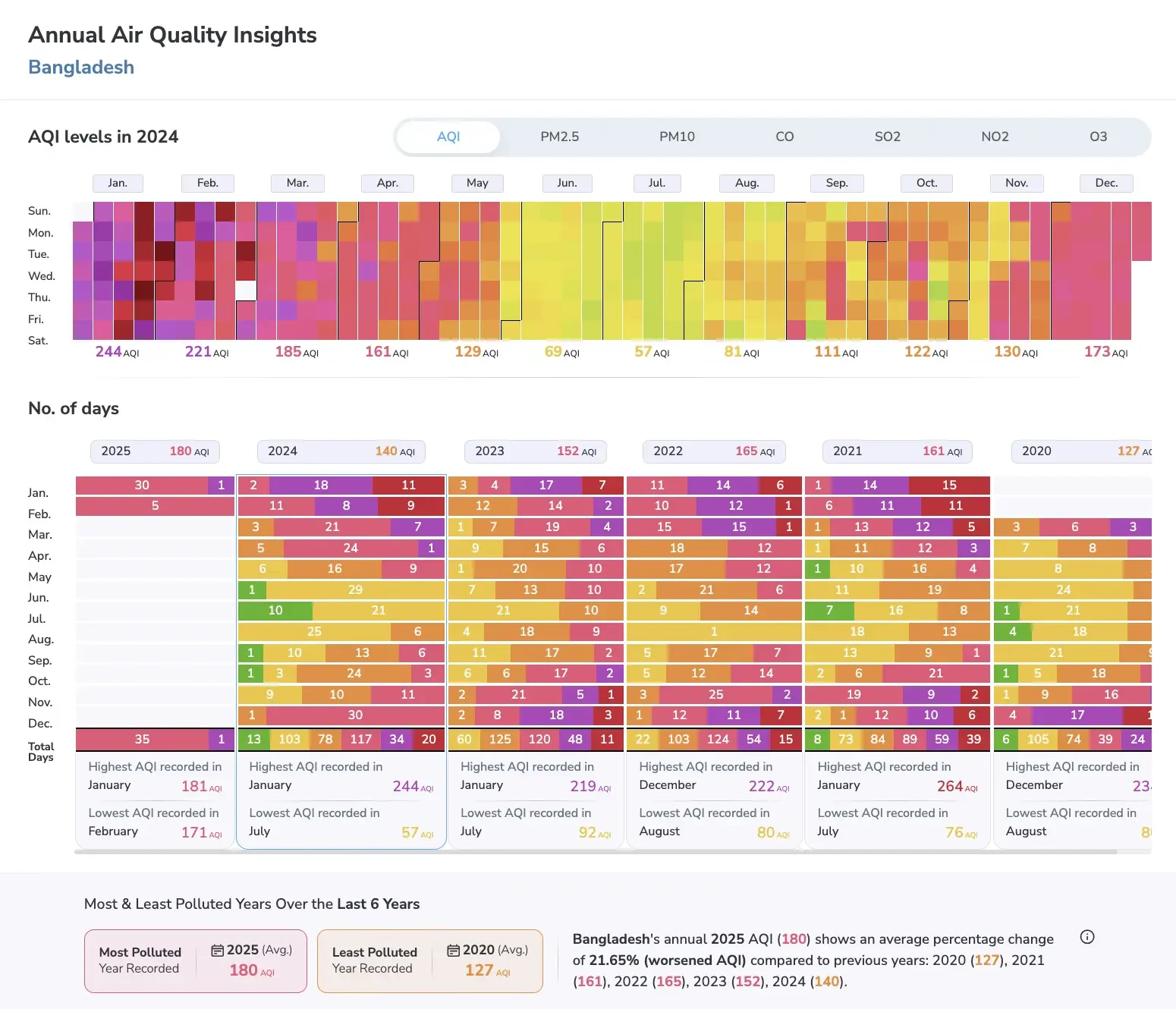
2. Pakistan
Average AQI in 2024: 115
Pakistan ranks second in the world for air pollution in 2024. The country’s average AQI of 115 indicates poor air quality, with periodic hazardous spikes, particularly in major cities like Lahore and Karachi. In January, AQI reached 200, signifying severe pollution levels.
Pakistan’s PM2.5 concentration averages 55 μg/m³, well above WHO safety limits. Industrial emissions, transportation, and agricultural burning are the key contributors to air pollution.
Poor air quality has led to a sharp increase in respiratory illnesses, allergies, and chronic conditions. Experts estimate that air pollution causes thousands of premature deaths in Pakistan each year.

3. India
Average AQI in 2024: 111
India’s average AQI of 111 indicates air quality ranging from poor to hazardous. The worst pollution levels are recorded in Delhi and Mumbai, with AQI surpassing 200 during the winter months.
The country’s PM2.5 levels average 48 μg/m³, far exceeding WHO recommendations. Major pollution sources include vehicle emissions, industrial pollutants, and agricultural burning.
Poor air quality in India has led to an increase in heart diseases, respiratory disorders, and other chronic illnesses, placing an enormous strain on the healthcare system.

4. Bahrain
Average AQI in 2024: 103
Although Bahrain does not experience the extreme pollution levels seen in South Asia, air quality remains unhealthy for sensitive groups. Pollution is worst in winter, similar to other Middle Eastern countries, due to dust storms and high vehicle emissions.
The PM2.5 level in Bahrain is 38 μg/m³, exceeding WHO’s safe limits. The primary sources of pollution are road traffic, industrial emissions, and natural dust storms. Individuals with pre-existing respiratory conditions often experience worsening health symptoms during peak pollution months.

5. Nepal
Average AQI in 2024: 100
Nepal’s air quality is classified as moderate, but pollution spikes in dry seasons, with AQI often exceeding 150.
The PM2.5 concentration in Nepal averages 39 μg/m³. The key sources of pollution include vehicle emissions, deforestation, and biomass burning for cooking. Urban areas like Kathmandu suffer the most from pollution-related health problems.
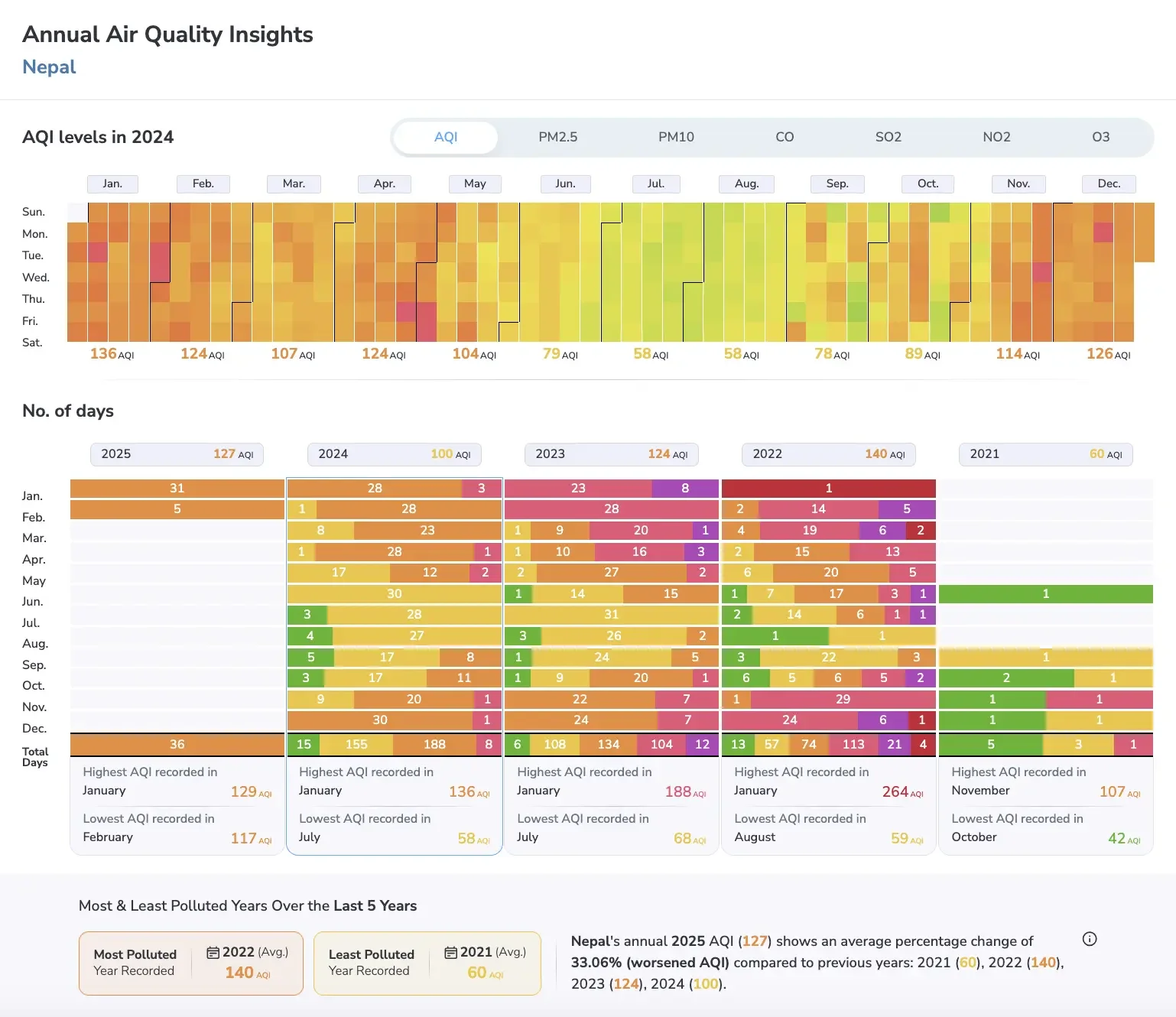
6. Egypt
Average AQI in 2024: 92
Egypt’s pollution crisis is driven by industrial activities, traffic emissions, and seasonal dust storms, particularly in Cairo.
The PM2.5 level in Egypt is 35 μg/m³. The combination of traffic congestion and industrial pollution leads to consistently high concentrations of harmful substances. Respiratory and cardiovascular diseases are on the rise due to air pollution exposure.

7. United Arab Emirates (UAE)
Average AQI in 2024: 90
Air quality in the UAE is relatively acceptable but worsens in summer due to high temperatures and dust storms.
The PM2.5 concentration in the UAE is 32 μg/m³, exceeding WHO limits. Key pollution sources include construction activities, transportation, and industrial emissions. Residents, especially children and the elderly, suffer from breathing issues and cardiovascular diseases due to pollution.
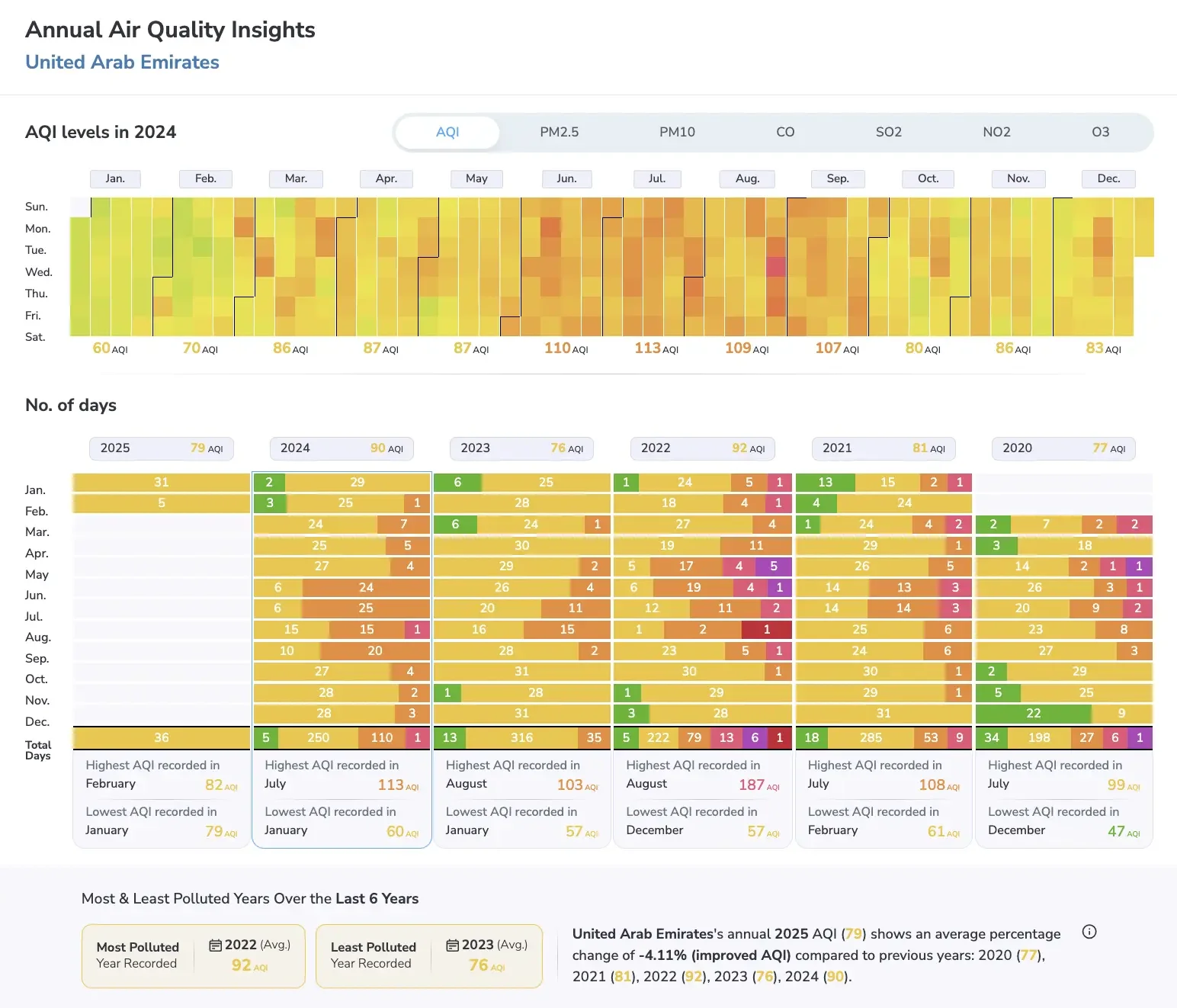
8. Kuwait
Average AQI in 2024: 89
Kuwait experiences moderate air pollution year-round, with peaks in summer due to dust storms and industrial activities.
The PM2.5 level is 34 μg/m³, posing long-term health risks. Chronic exposure to polluted air can lead to respiratory diseases and cardiovascular complications, especially in urban centers.
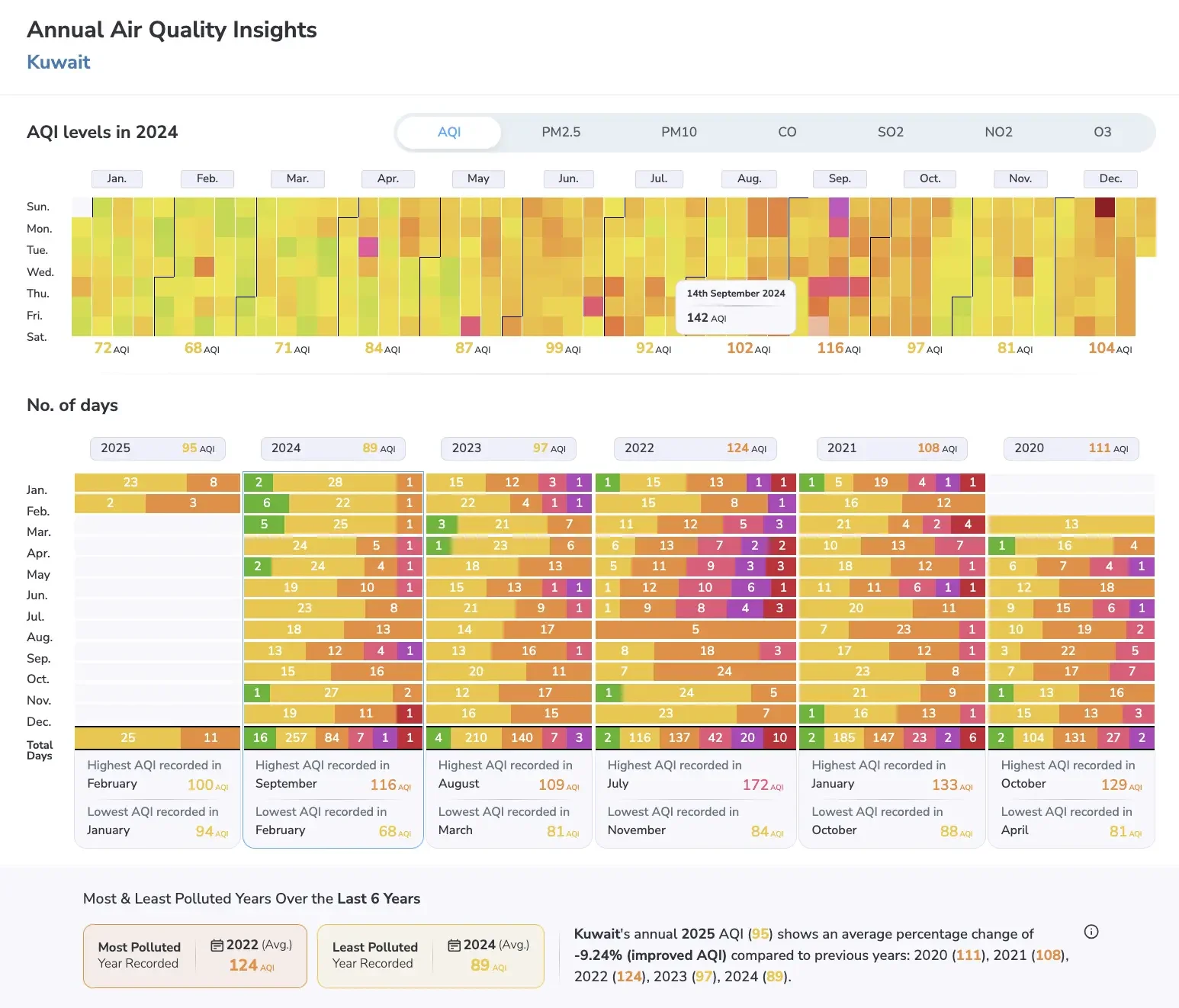
9. Tajikistan
Average AQI in 2024: 89
Like many Central Asian countries, pollution in Tajikistan is caused by vehicle emissions, industrial activities, and biomass burning.
The PM2.5 level is 34 μg/m³, exceeding WHO’s recommended limits. Poor air quality is a serious health hazard, increasing respiratory and cardiovascular disease risks.
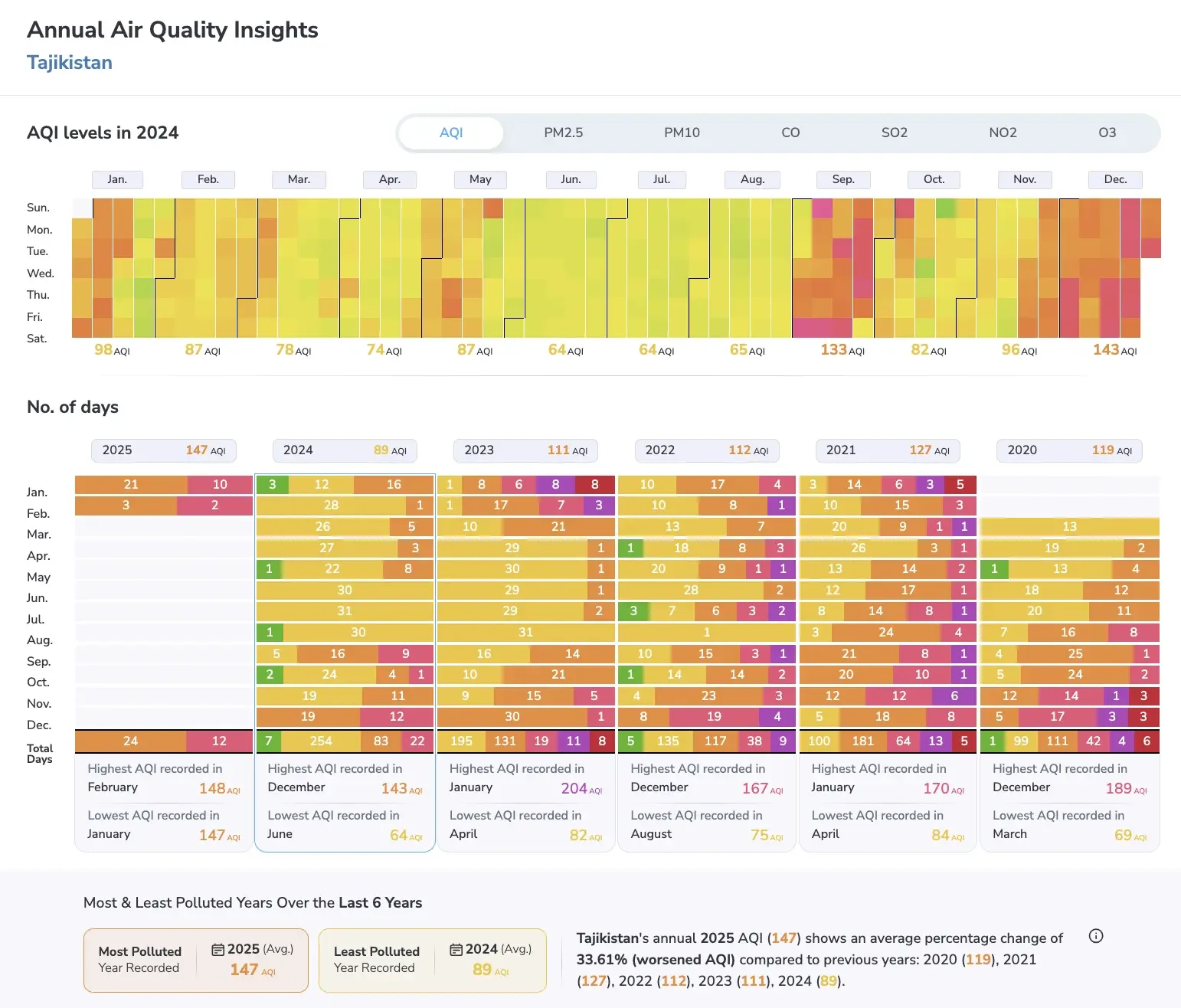
10. Kyrgyzstan
Average AQI in 2024: 87
Air quality in Kyrgyzstan is generally acceptable but worsens due to dust storms and agricultural burning.
The PM2.5 level is 44 μg/m³, significantly exceeding WHO limits. High pollution levels increase the risk of breathing difficulties, particularly in winter months when pollution peaks.

The 2024 AQI rankings highlight a worsening air pollution crisis in many countries. These rankings are not just statistics—they represent serious health risks and environmental damage caused by air pollution.
From Bangladesh to Kyrgyzstan, the risks of poor air quality are widespread. Experts emphasize the need for stricter environmental regulations, reduced industrial and transport emissions, and increased investments in green technologies.
By addressing air quality challenges, these countries can improve public health, enhance sustainability, and secure a cleaner future. Governments must take decisive action, and individuals should be aware of the air they breathe and work towards reducing pollution.





